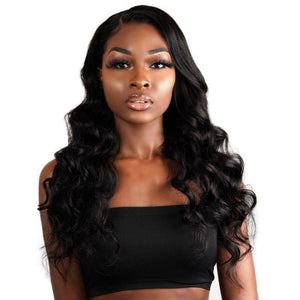Hair Cycle Stages!
Hair is way more complicated and exciting than it appears to be on the surfaces of our scalps. Hair plays a vital role in
our social appearances, and it also transmits the sensory information that we need. By the time a fetus reaches about 22 weeks, it has all of its needed hair follicles. As humans, we all have what's called a hair cycle. Even at this stage of life, there are approximately 4-5 million hair follicles on a fetus’s body. As we develop, we have about one million hair follicles on our head and one hundred thousand on our scalp. The number of follicles we have when we’re babies is the most substantial amount we will ever have. This is because when we won’t generate new hair follicles during our lives. When we grow older, our scalps expand which causes the density of our hair to lessen. As we grow older, our hair becomes thinner. Hair grows through a growth cycle that has four stages. Each stage plays a vital role in the
health of your hair. If one phase is not completed, then it could throw off the1 entire balance of your growth! Let’s get into the importance of the four stages and what they are!
The Hair Growth Cycle Is Essential
Many of us have felt with dull, dry and brittle hair before. Many of us have tried to maintain those different hair issues with countless products and treatments created by the
hair industry. These treatments provide us with a temporary fix, but it’s essential that we get down to the root of the issue. The only way to do that is by understanding the hair growth cycle. Our hair grows about six inches per year, and unlike other mammals, the human hair cycle is random. It’s not seasonal, or cyclical which means your hair can shed at any given time throughout our lives. At any random time, an arbitrary number of hair will be in one of these four stages: Anagen, the growing phase, Catagen, the transition phase, Telogen, the resting period, and Exogen, the shedding phase. These four phases make up the entirety of the
hair growth cycle phase. There are two essential parts of hair that we must understand before dissecting the cycle. The follicle and the shaft are two crucial parts of our strands. The follicle resides in the skin, and the shaft is what is visible above the scalp. The more that we understand the follicle and shaft, the more we’re able to appreciate our cycles, and how to curb different hair ailments! Let’s get into these stages!
Anagen
Anagen is the phase of the hair that is most active. During this phase, the hair grows about 1 cm every 28 days. Depending on your hair type, and health, it may develop even more. The cells in the root of the hair rapidly divide up, which creates growth. After they divide up, a new hair is born and pushes the dormant hair up the follicle and out. Hair follicles stay in the active phase of growth for three to six years. Sometimes people have difficulty growing their hair beyond a certain length because they have a shorter active phase of growth than others. On the contrary, people with
very long hair have a longer active period of growth than others. The hair on the arms, legs, eyelashes, and eyebrows have a very short active growth phase in comparison to the hair that grows on the scalp. They only last about 30 to 45 days. This explains why they are so much shorter than scalp hair. The anagen phase is where all the excitement happens but lets talks about the next stage!
Catagen
The catagen phase is a transitional stage. About 3% of hairs are in this phase at any given time. This part of the cycle lasts for about two to three weeks. During this phase, growth stops entirely and the outer root
shrinks and attaches to the root of the hair. This part of the stage creates club hair or dormant hair. During this phase, the hair decreases in size and length. This is one of the shortest periods but most essential.
Telogen
Telogen is the resting phase and lasts up to 3 months! This part of the cycle typically accounts for 6% of all hairs. This phase lasts for about 95 days for hairs on the eyelashes, eyebrows, arms, and legs. The hair follicle is entirely at rest during this phase, and the club hair is wholly formed. If you decide to pull out a hair during this phase, you’ll find a solid, hard, dry, white material at the root. Don’t be alarmed as it’s completely normal! At this point in the cycle, about 25 to 100 telogen hairs are shedding throughout the day. After the resting phase, comes the shedding phase, called exogen.
Exogen
During this phase, the old hair detaches and sheds, while new hair continues to grow and expand. While this phase is ongoing, approximately 50 to 150 of your hairs may fall out throughout the day. A variety of factors impacts your rate of hair growth and shedding. Aspects such as
everyday stress, medication, age, heredity, damage, and styling can manipulate your average growth and shedding cycle. Your nutrition is also severely important when it comes to hair. As we get older, the length of the anagen phase shortens, causing the hair to become thinner after each hair growth cycle. By maintaining a healthy lifestyle, we can support a normal, and healthy hair growth cycle. A proper diet and supplements with essential fatty acids, vitamins, and minerals will help you maintain healthy hair growth. It will take many months before we see any difference in our hair, whether good or bad. To look at the effects, it depends on the telogen cycle. While we wait for the changes, it’s essential that we nourish our hair as best as we can.
What To Remember
The hair cycle is interesting and complex. It’s essential to know how our hair growth cycle works so that we can adequately take care of our hair. The hair cycle has four different cycles that are necessary to promote a healthy head of hair. If one cycle is imbalanced, then it’s essential to look into the reasons why. There are plenty of different factors that play into an imbalanced hair cycle but maintaining a
healthy diet can help curb that. Be consistent with your hair care regimen, and stay up to date with your hair growth cycle to have healthy and beautiful hair.



